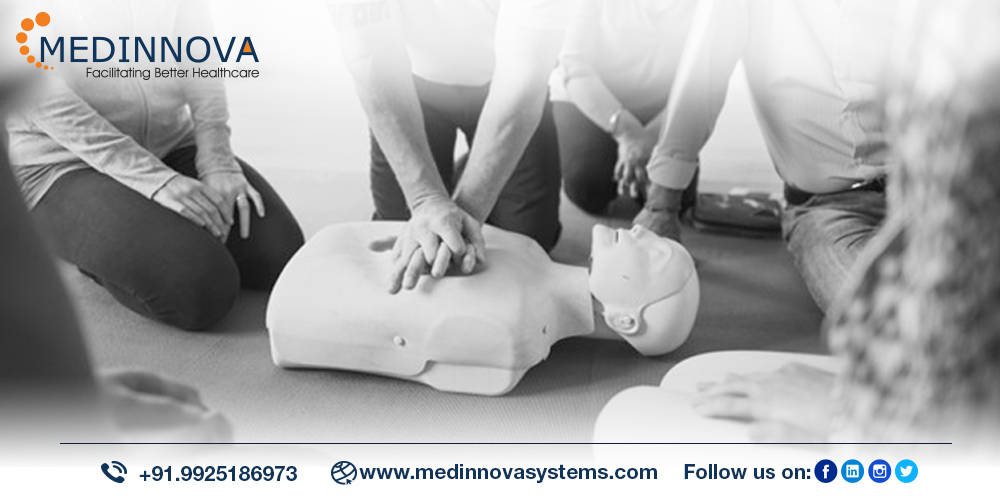Friends in their 30’s on a sunny afternoon playing soccer. A beautiful playful moment becomes a nightmare when one of the healthy ones collapses on the field and stops breathing!!! Or this can happen in a BBQ cookout or at an evening dinner among families and friends or at your workplace. Well, the friend on the soccer field was, unfortunately, having a silent stroke. This needed a first responder’s treatment but none of his friends knew the technique of CPR, which cost the precious moments to stabilize their friend’s heart. The wait for the ambulance and the journey to the hospital was little to tool late. This tragedy could be averted if only one of them knew the technique of performing CPR.
CPR (Cardio Pulmonary Resuscitation) is a technique of counted chest compressions that helps pump oxygenated blood to the brain or other human organs when the heart stops working or pumping blood. This technique is highly recommended to be given to a patient even before a first responder attends and eventually provide professional life-saving treatment. The technique of CPR helps provide the early respite before the brain and other organs go into a shock.
Who can perform CPR?? As advised by the American Heart Association and to quote them, there are 3 kinds of CPR performers:
- Untrained performers are advised to provide hands-only uninterrupted chest compressions of 100 to 120 compressions a minute.
- Trained but rusty performers who once were trained but not confident are advised to provide the 100 to 120 chest compressions.
- For trained and ready to go, performers, it is advised they wait to chk the pulse for 10 seconds and if no breathing or pulse then start with chest compressions of 30 and moving onto resuscitation technique.
Important points to consider before performing CPR:
- Make sure the surrounding is safe for you and the patient
- Check if there is a pulse or is the person breathing
- Try and get a response from the patient
- Before performing CPR at least call 112 and report
- Perform CPR
How to give CPR: The American Heart Association has simplified the process of performing CPR to advance its awareness and technique so that a layman can provide this technique to a needy person and help save a life. They have abbreviated the procedure into C.A.B…Which are Compressions, Airway, and Breathing?
- Compressions help restore the blood circulation to the brain and vital organ.
Technique: Place the person on a flat surface. Kneel near to the person’s neck and shoulder. Place the palm or heel of your plam in the middle of the chest keeping your elbows straight. Using your upper body strength press the person’s chest 2 inches down and compress for 100 to 120 time in a minute. Continue chest compressions till you see any movements. If you’re trained then move to the next technique of opening up the airways
- Open up the Airway
Technique: For trained CPR providers after 3 compressions, it is recommended to put your palm on the person’s forehead and tilt the head back and with the other hand pull the chin up to free up the breathing track.
- Breathing for the person. Resuscitation can be mouth to mouth or mouth to nose in case of injury to the mouth.
Technique: After the airway tilt and chin pull, give 2 breaths of mouth to mouth by pinching the nostrils shut and giving two breaths each lasting 1 second. Watch if the chest heaves and in case it does not then perform the 30 compressions and repeat the airway and 2 breaths each for one second. Perform CPR till chest moves or Automated External Defibrillator is used.
We at Medinnova Systems Pvt. Ltd. believe that every vertical of medical treatment has certain awareness based remedies that help in providing immediate first responders services. We are responders of such remedies and tips that would help you save your loved ones and enjoy a healthy life. Though we serve with a machine that saves a life, we would like to be suggestive in not taking life for granted!!!

